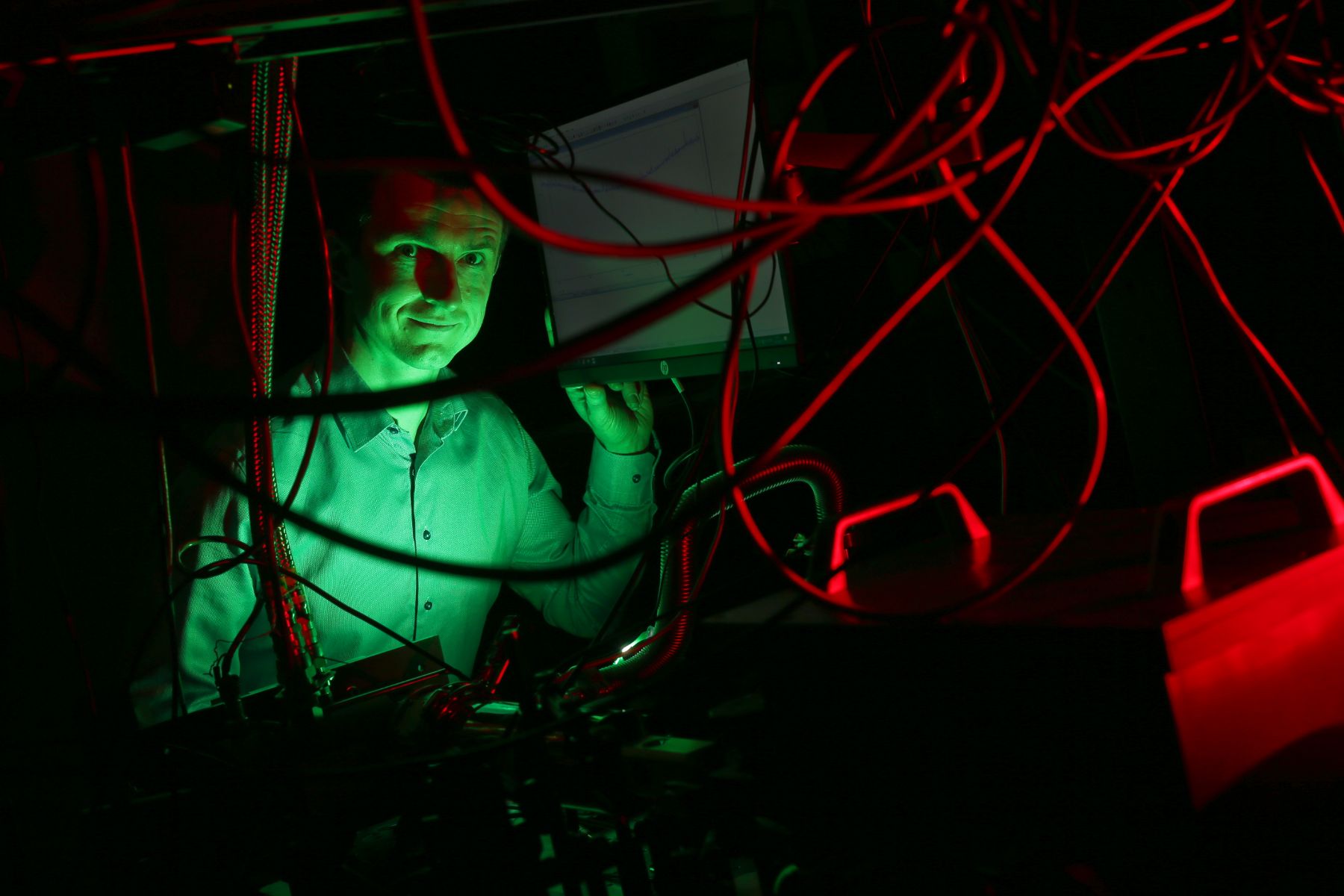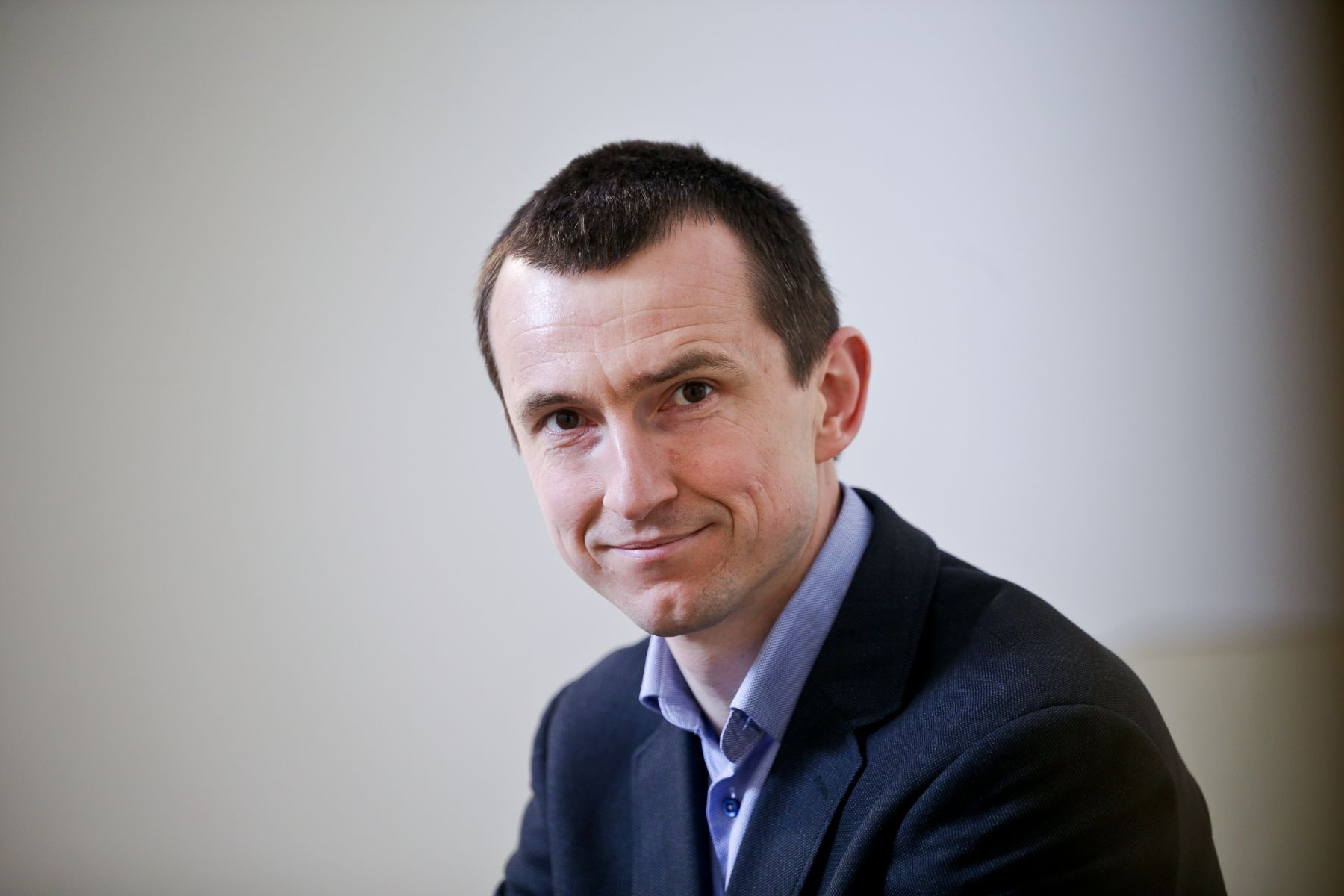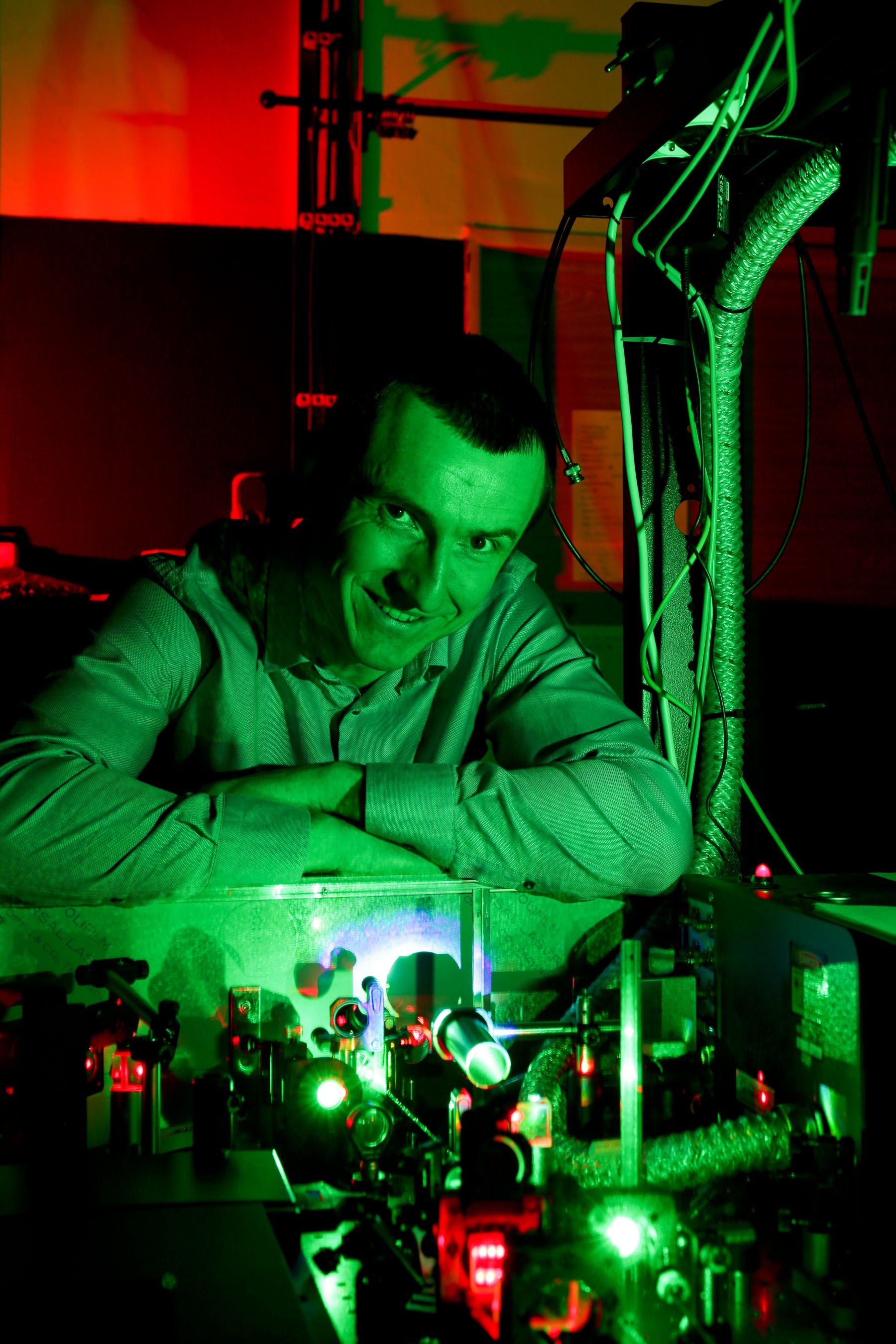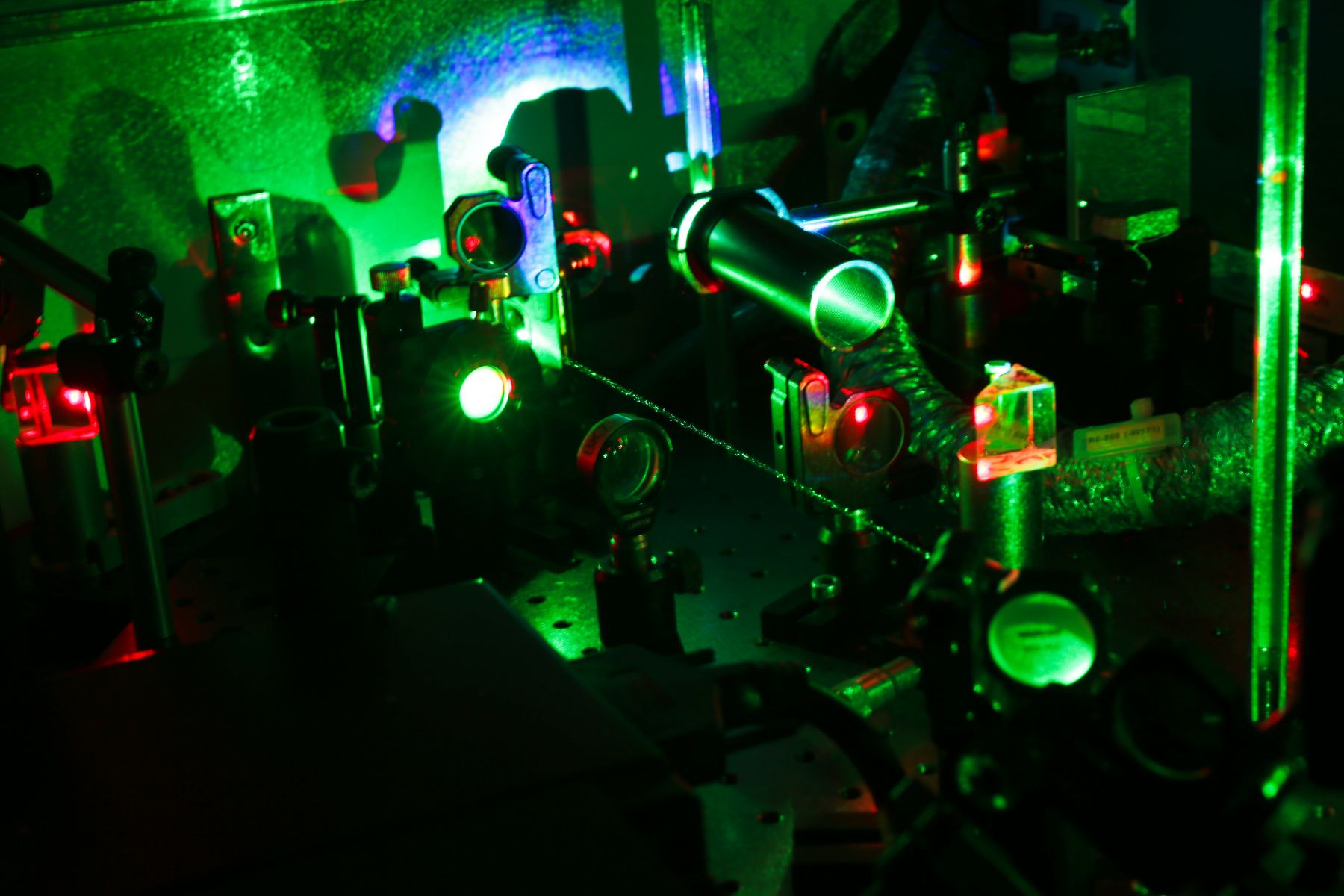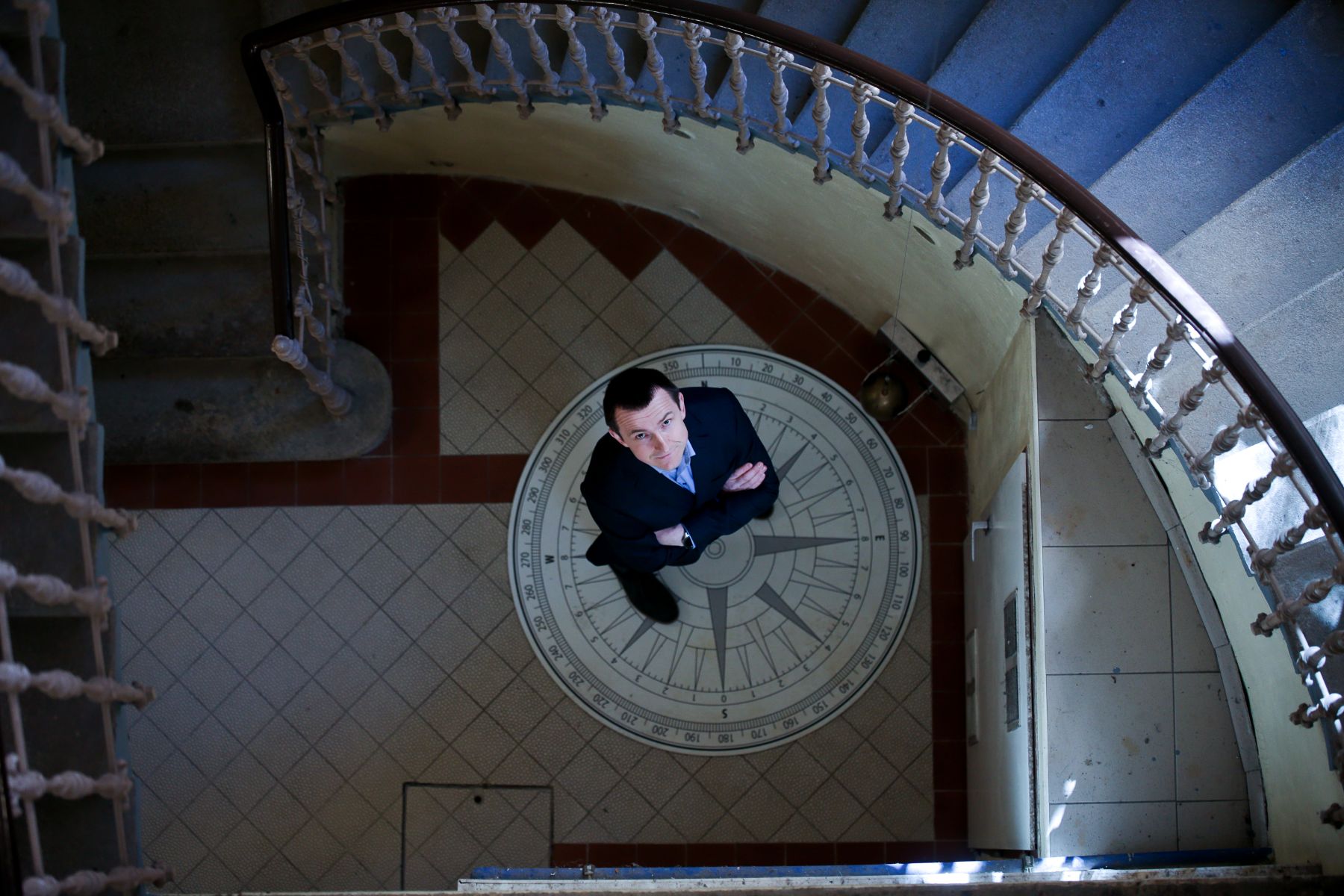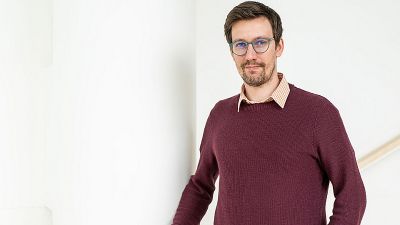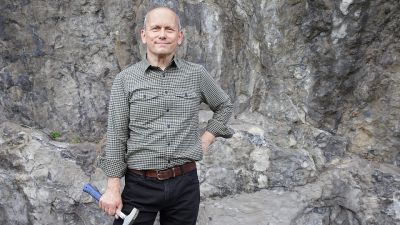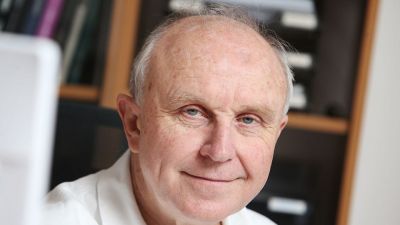Martin Kozák from the Faculty of Mathematics and Physics of Charles University has been awarded a prestigious ERC Starting Grant for the research of new electron microscopy techniques that will allow capturing the motion of electrons in matter with high spatial and temporal resolution. “We want to develop a tool for the research of new materials and phenomena for faster electronics and information transfer,” says the scientist, who was inspired by his experience abroad and whose parental leave helped him to succeed.
“If all goes well, at the end of the project we will have an electron microscope that can image the materials studied with high spatial and temporal resolution - in simple terms, to record time-resolved movies of electrons dynamics in matter, which has not been possible until now,” he summarises the main goal of the five-year project, which has received €1.83 million, or over 45 million crowns, from the European Research Council (ERC).
Current electron microscopes only provide static images; it is not possible to observe how the sample under study evolves dynamically over time. “Electrons in electron microscopes behave like waves that can be controlled by electric and magnetic fields. The current manipulation techniques have a number of limitations. Electron optical elements, for example, have optical aberrations that are difficult to remove. We plan to control electron waves using shaped light fields in vacuum. This will allow us to observe dynamic processes with high resolution on the order of nanometres and femtoseconds,” describes the recent grant recipient.
Research for faster electronics and information transfer
Why do we need a better microscope? It will allow us to study the basic parameters of light-matter interactions that happen all the time in everyday life. For example, on a mobile phone display, where there are light sources and modulators that allow us to see the information displayed.
“There is an ever-increasing demand for more powerful and better optoelectronic components and faster ways to transmit and process information. One way to achieve this is through the use of nanophotonic components based on nanostructures made of different materials. However, for research on such materials, we need to have a tool that allows the interactions to be imaged with sufficient temporal and spatial resolution, and this has not yet been possible,” the award-winning physicist explains the potential benefits and practical applications of their basic research.
Much of this research takes place at the computer, where scientists analyse measured data or plan further experiments. But when they get into the lab, their research looks like building a very precise Lego. “We have a lot of mechanical components into which we place optical elements with high precision so that everything works as we need it to. It's a kind of optical Lego,” Martin Kozák says.
“The initial idea was conceived in 2015, when I went to Erlangen, Germany, for a postdoctoral research fellowship. There, I started working on the physics of the interaction of free electrons with light in electron microscopes,” explains the Faculty of Mathemtaics and Physics graduate, who started out in ultrafast laser spectroscopy, which is dedicated to measuring the optical response of materials over time (for example, a short optical pulse is shone on the sample under study and measured, which uses femtosecond lasers as a tool for generating ultrafast flashes of light.
“The group I was part of in Germany is trying to develop electron accelerators based on the interaction of electrons with light in the form of near-field nanostructures. So I started to wonder whether it would be possible to control electrons with light waves in a vacuum without using nanostructures. Already during my stay in Germany we carried out the first experiments, which were published in the high-quality journal Nature Physics. To this day, we are the only group in the world that has used this way of manipulating electrons,” the scientist describes how the idea for the ERC project came about.
He tried to further develop his findings after his return to Prague, but only on a theoretical level, as he lacked the experimental equipment needed for this research in the Czech Republic. “Thanks to the ERC, I have now received funding to buy equipment that will allow us to carry out experiments, which we would have to perform abroad otherwise.”
In addition to his expertise, the postdoctoral fellowship also enriched his experience in writing project applications. “In Germany, thanks to my participation in the preparation of several large project applications, I learned that it is not enough to prepare a project technically, but it is necessary to sell the idea well. The support of Professor Zdeněk Strakoš and the team from the Technology Centre, who organise workshops informing about all the pitfalls of applying for ERC projects, also helped me a lot with the preparation of the ERC application. For this I would like to thank them very much.”
The ERC project should be at the limit of what is possible
Research on the interaction between light and electrons began to develop a decade ago, and the vast majority of research groups are working on nanostructure-mediated interactions. “In this grant we plan to use a different principle - it will all take place in a vacuum, so nanostructures are not needed at all. We will control the electron beams using two pulsed laser beams inside an electron microscope,” the physicist describes the unique approach they plan to develop further.
“When writing the application, it helped that I was applying for the second time and had some experience and feedback from the first attempt. The most significant criticism from the referees was that my proposal was not bold enough and lacked a long-term perspective. The reviewers not only appreciate original ideas, but the project should also be so-called high-risk/high-gain and, if successful, significantly change the whole direction of the research. My second application was thus significantly different. I tried to imagine the ideal state that I would like to achieve in the grant and explain that it is possible to get there. It is of course necessary to balance high risk with the feasibility, the evaluators are top experts and would see through unrealistic dreams,” he smiles.
For finding the line between dream and reality, he says his practical experience in the lab helped him the most. “Fortunately, in physics you can also calculate quite a lot of things, create theoretical models and prove that a significant part of the experiments in the project design are feasible,” he adds.
Parenting also helped to get the ERC
“When I found out I had been awarded the grant, I was very happy. It was the last chance for me to apply for an ERC Starting Grant. The fact that I spent four months on parental leave also helped me fit the maximum number of years after completing my PhD,” adds the father of three.
He was inspired to do this by a friend who spent three years on parental leave in Germany. “He really enjoyed it, so when my wife and I had our third child, we decided to give it a try during the four months in the summer break between semesters. And it was great - it didn't bring any professional constraints - I had plenty of time to think about the details of the project in between playing with the kids, and in my field, you can do many things from home in the evenings,” shares the scientist, who says he didn't even notice any surprised reactions from those around him.
| Martin Kozák, Ph.D. |
| Martin Kozák graduated from the Faculty of Mathematics and Physics of Charles University. He completed his postdoctoral research fellowship at Friedrich-Alexander-Universität in Erlangen, Germany. He is currently working at the Department of Chemical Physics and Optics at the Faculty of Mathematics and Physics at CU, where he is researching the interaction of ultrashort laser pulses with matter and free electrons for use in advanced electron microscopy. |


